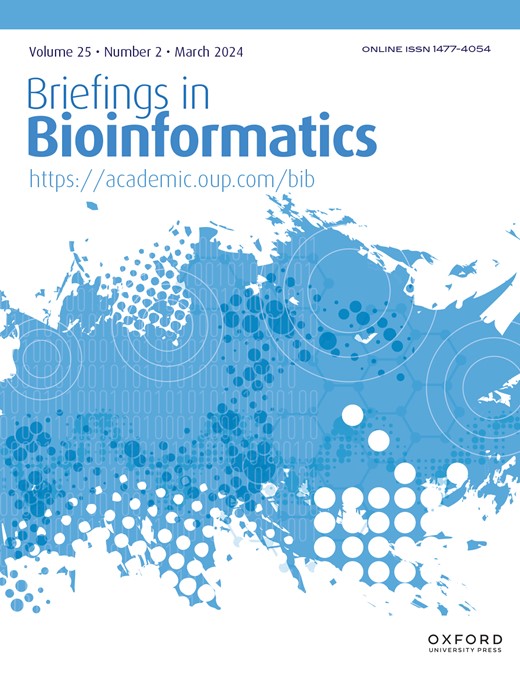强化学习驱动的多肽空间探索:加速类药物多肽的生成。
IF 6.8
2区 生物学
Q1 BIOCHEMICAL RESEARCH METHODS
引用次数: 0
摘要
利用氨基酸残基生成多肽解决了几个关键问题,包括氨基酸序列顺序的精确控制、用于性质修饰的定制多肽以及大规模多肽合成。蛋白质含有未知的氨基酸残基。提取这些氨基酸残基合成类药物肽,可以创造出具有独特性质的新结构,从而推动药物开发。计算机辅助设计新型多肽药物分子可以解决传统药物发现过程中的高成本和低效率问题。以往的研究由于不太重视氨基酸结构的连接关系,在提高多肽药物的生物活性和药物亲和性方面存在局限性。因此,我们提出了一种基于图注意机制的强化学习驱动的多肽生成模型。通过利用图注意机制的优势,该模型有效地捕捉到了多肽中氨基酸残基之间的连接结构。同时,利用强化学习在指导最佳序列搜索方面的优势,为多肽设计和优化提供了一种新方法。该模型引入了一个具有实时反馈回路的行为批判框架,以实现属性之间的动态平衡,从而为特定靶点定制生成多种多肽,并增强多肽与靶点之间的亲和力。实验结果表明,生成的类药物多肽符合指定的吸收、分布、代谢、排泄、毒性特性和生物活性,成功率超过90%,从而大大加快了类药物多肽的生成过程。本文章由计算机程序翻译,如有差异,请以英文原文为准。
Reinforcement learning-driven exploration of peptide space: accelerating generation of drug-like peptides.
Using amino acid residues in peptide generation has solved several key problems, including precise control of amino acid sequence order, customized peptides for property modification, and large-scale peptide synthesis. Proteins contain unknown amino acid residues. Extracting them for the synthesis of drug-like peptides can create novel structures with unique properties, driving drug development. Computer-aided design of novel peptide drug molecules can solve the high-cost and low-efficiency problems in the traditional drug discovery process. Previous studies faced limitations in enhancing the bioactivity and drug-likeness of polypeptide drugs due to less emphasis on the connection relationships in amino acid structures. Thus, we proposed a reinforcement learning-driven generation model based on graph attention mechanisms for peptide generation. By harnessing the advantages of graph attention mechanisms, this model effectively captured the connectivity structures between amino acid residues in peptides. Simultaneously, leveraging reinforcement learning's strength in guiding optimal sequence searches provided a novel approach to peptide design and optimization. This model introduces an actor-critic framework with real-time feedback loops to achieve dynamic balance between attributes, which can customize the generation of multiple peptides for specific targets and enhance the affinity between peptides and targets. Experimental results demonstrate that the generated drug-like peptides meet specified absorption, distribution, metabolism, excretion, and toxicity properties and bioactivity with a success rate of over 90$\%$, thereby significantly accelerating the process of drug-like peptide generation.
求助全文
通过发布文献求助,成功后即可免费获取论文全文。
去求助
来源期刊

Briefings in bioinformatics
生物-生化研究方法
CiteScore
13.20
自引率
13.70%
发文量
549
审稿时长
6 months
期刊介绍:
Briefings in Bioinformatics is an international journal serving as a platform for researchers and educators in the life sciences. It also appeals to mathematicians, statisticians, and computer scientists applying their expertise to biological challenges. The journal focuses on reviews tailored for users of databases and analytical tools in contemporary genetics, molecular and systems biology. It stands out by offering practical assistance and guidance to non-specialists in computerized methodologies. Covering a wide range from introductory concepts to specific protocols and analyses, the papers address bacterial, plant, fungal, animal, and human data.
The journal's detailed subject areas include genetic studies of phenotypes and genotypes, mapping, DNA sequencing, expression profiling, gene expression studies, microarrays, alignment methods, protein profiles and HMMs, lipids, metabolic and signaling pathways, structure determination and function prediction, phylogenetic studies, and education and training.
 求助内容:
求助内容: 应助结果提醒方式:
应助结果提醒方式:


